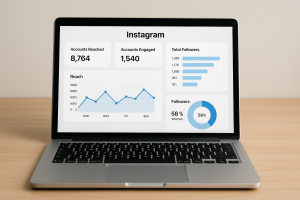 For marketers, creators, and businesses alike, knowing how followers engage with content—when, where, and how—can make the difference between a campaign that connects and one that flops. Tools that provide insights into audience behavior are essential, and pairing that data with services like Famoid real IG users can help ensure you’re reaching genuine, active followers who are more likely to interact with your content.
For marketers, creators, and businesses alike, knowing how followers engage with content—when, where, and how—can make the difference between a campaign that connects and one that flops. Tools that provide insights into audience behavior are essential, and pairing that data with services like Famoid real IG users can help ensure you’re reaching genuine, active followers who are more likely to interact with your content.
That’s where edge communication technologies come in.
What Is Edge Communication?
Think of edge communication like having a local brain that processes information on-site, rather than sending it back to headquarters. This shift enables faster data analysis, reduced latency, and more intelligent interactions between users and systems.
When it comes to tracking follower behavior, edge communication tools can monitor actions as they happen, offering insights that are not just timely but also incredibly detailed.
Why Real-Time Matters
Traditional analytics tools collect data, send it to a central server, analyze it, and return results. That’s fine for a general overview. However, in dynamic environments such as social media, e-commerce, or live events, delayed data is less valuable. You need to know what’s working right now so you can adjust on the fly.
Edge communication reduces that gap. With edge-based systems, user behavior can be tracked, analyzed, and acted on within milliseconds. This enables:
- Personalized content delivery
- Instant alerts for unusual behavior
- Adaptive user interfaces
- Smarter recommendations
All of this can lead to better engagement and a stronger connection with your audience.
How It Works in Practice
Let’s say you run a streaming platform. With edge communication tools, you can track how users interact with your content in real time. If a large number of users drop off at a certain point in a video, you’ll know immediately. If viewers in one region respond better to a certain type of thumbnail or description, the system can automatically adjust content displays in that area.
This level of responsiveness is possible because data doesn’t have to travel to a central server to be useful. Instead, small processing units located closer to the user—like in local servers or even on-device—handle the analysis.
Use Cases Across Industries
1. Social Media and Influencer Marketing
Influencers and brands can monitor follower reactions to stories, posts, and campaigns in real time. If a particular post is receiving more saves or shares than usual, they can quickly pivot their content strategy. Edge technologies allow platforms to tailor what each user sees based on their current behavior, not just their historical data.
2. Retail and E-Commerce
In online shopping, knowing what users are clicking, searching for, or abandoning in real-time allows platforms to adjust recommendations instantly. For physical stores equipped with IoT sensors, edge processing can track foot traffic and in-store engagement to optimize layouts and promotions, ultimately enhancing the customer experience.
3. Event Streaming and Live Content
Live sports, concerts, or gaming streams benefit heavily from real-time audience tracking. Edge technologies help identify which moments trigger spikes in engagement, enabling content creators to emphasize or replay highlights quickly.
4. Smart Cities and Public Safety
Beyond consumer behavior, edge communication is also used to track crowd movement in public spaces. In large gatherings or festivals, it can help identify potential safety risks or bottlenecks in real time.
Privacy and Security Considerations
Real-time tracking naturally raises privacy concerns. But edge communication can support more secure data practices. Since much of the data is processed locally, less information needs to be transmitted or stored in the cloud. This reduces exposure and can help companies comply with regulations like GDPR.
However, transparency is still key. Users need to know what data is being collected and how it’s being used. Opt-in features, anonymized tracking, and clear communication go a long way in maintaining trust.
The Technical Backbone
Edge communication relies on a mix of hardware and software:
- Edge Devices: Sensors, smartphones, cameras, or any endpoint that can collect data.
- Edge Gateways: Intermediate processors that filter and manage data before it’s sent to the cloud or other systems.
- AI/ML Algorithms: Used locally to interpret behavior and make predictions or decisions without external input.
- Network Infrastructure: 5G plays a significant role here, providing the speed and bandwidth necessary to support large-scale, real-time tracking.
Looking Ahead
As 5G continues to expand and edge computing becomes more accessible, real-time behavior tracking will become increasingly sophisticated. We’re moving toward systems that don’t just react but anticipate user needs based on current behavior patterns.
For brands and platforms, the challenge is to use these tools thoughtfully—balancing personalization with privacy, and speed with strategy.
Final Thoughts
Tracking follower behavior in real time with edge communication technologies isn’t just about faster data. It’s about making smarter decisions, fostering stronger engagement, and delivering more meaningful user experiences. By moving the brainpower closer to the action, businesses can stay agile, relevant, and ahead of the curve.
But success doesn’t come from the technology alone—it comes from how you use it.